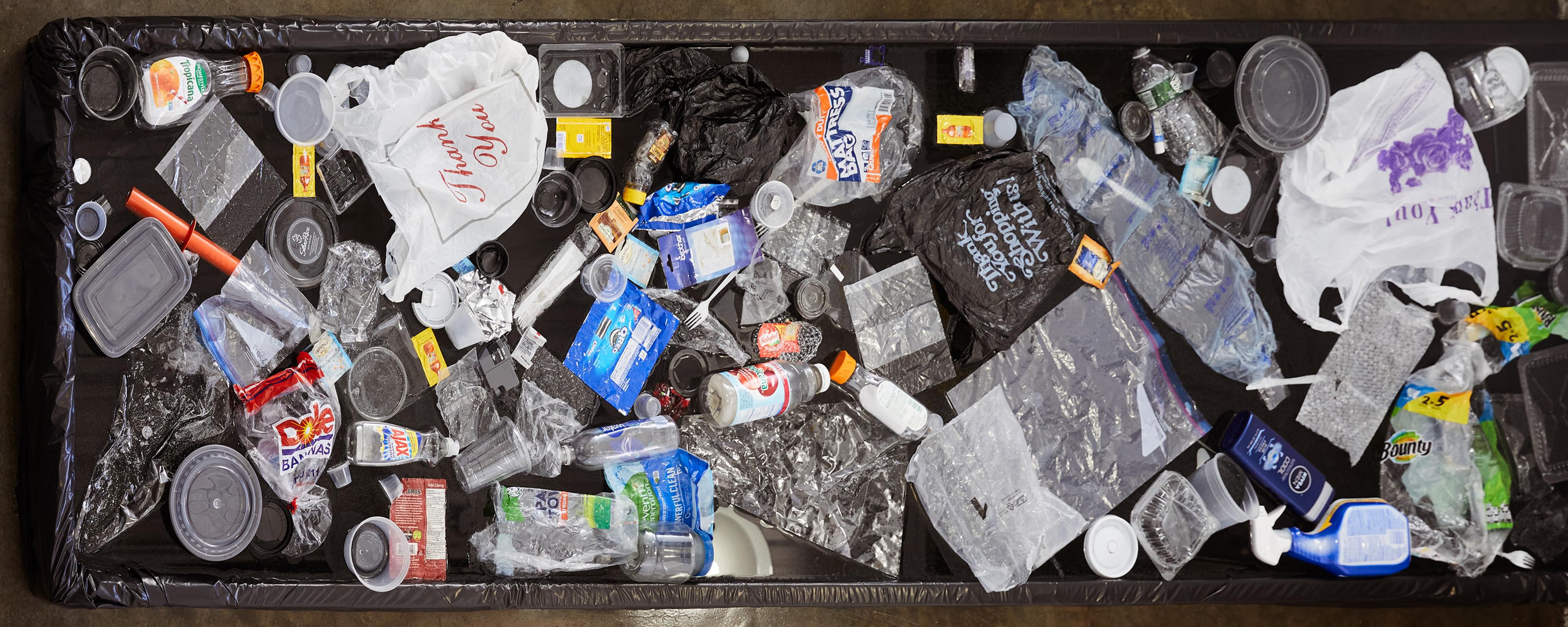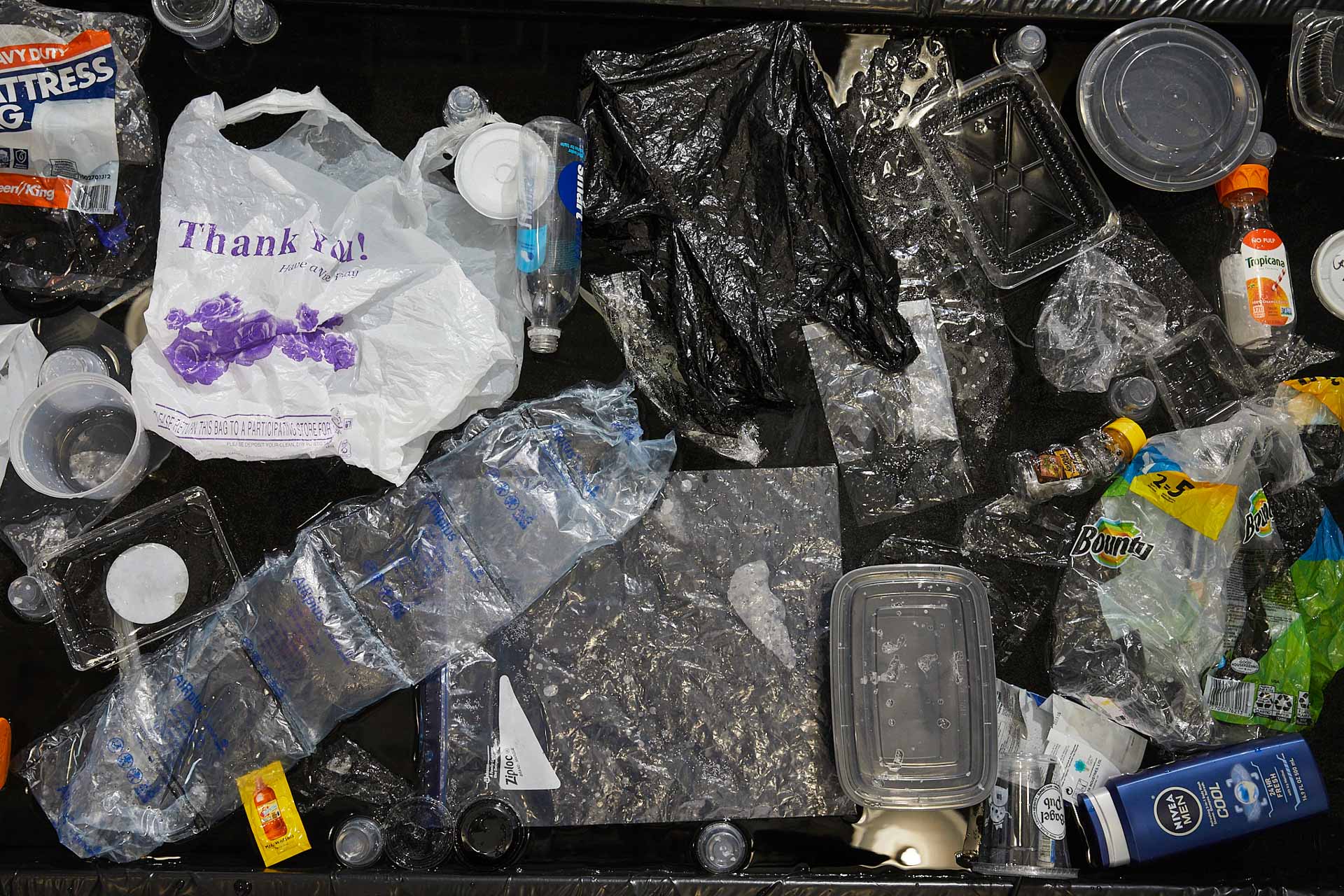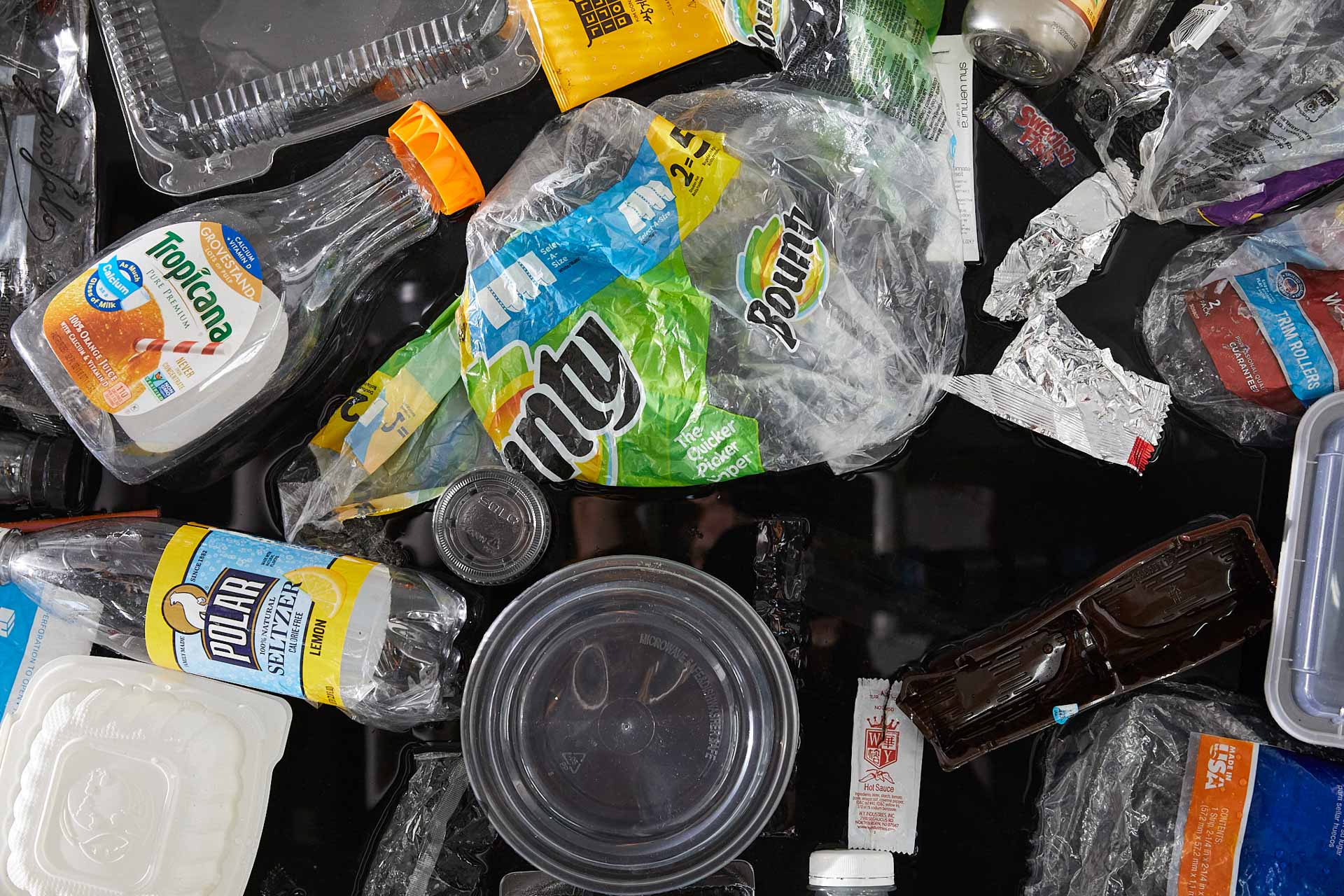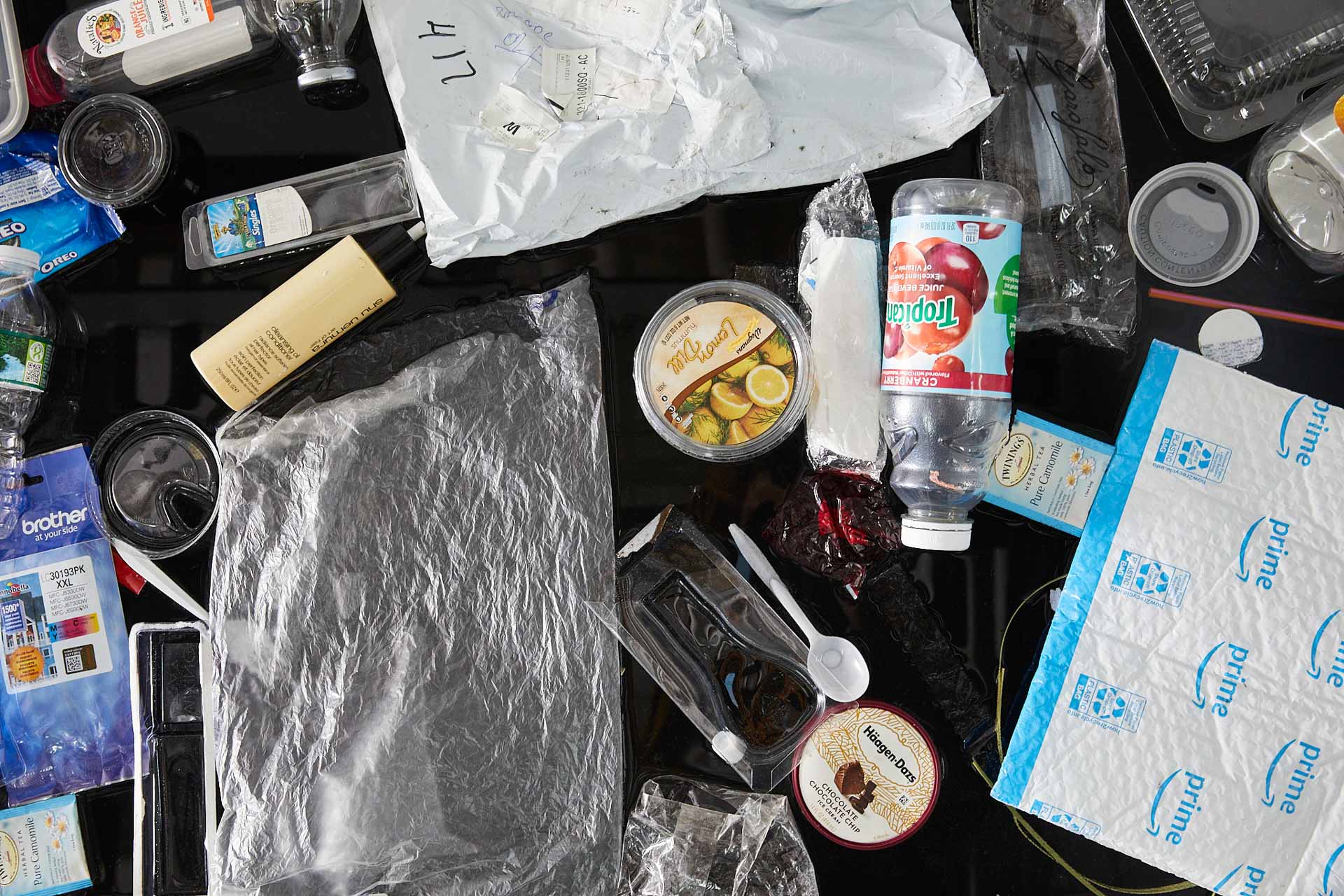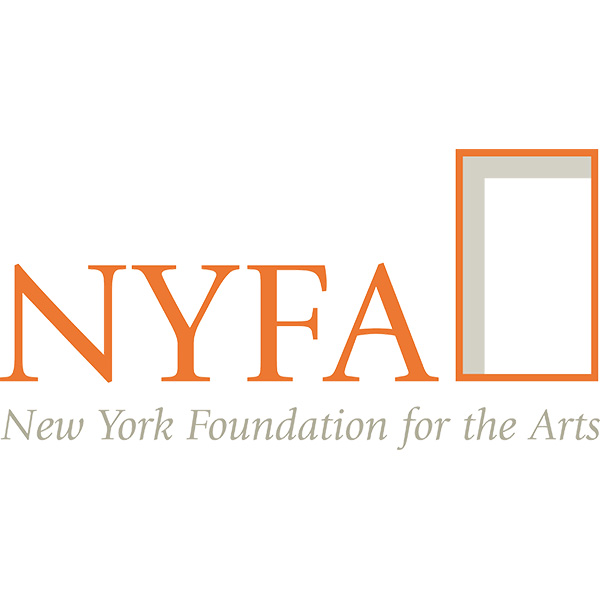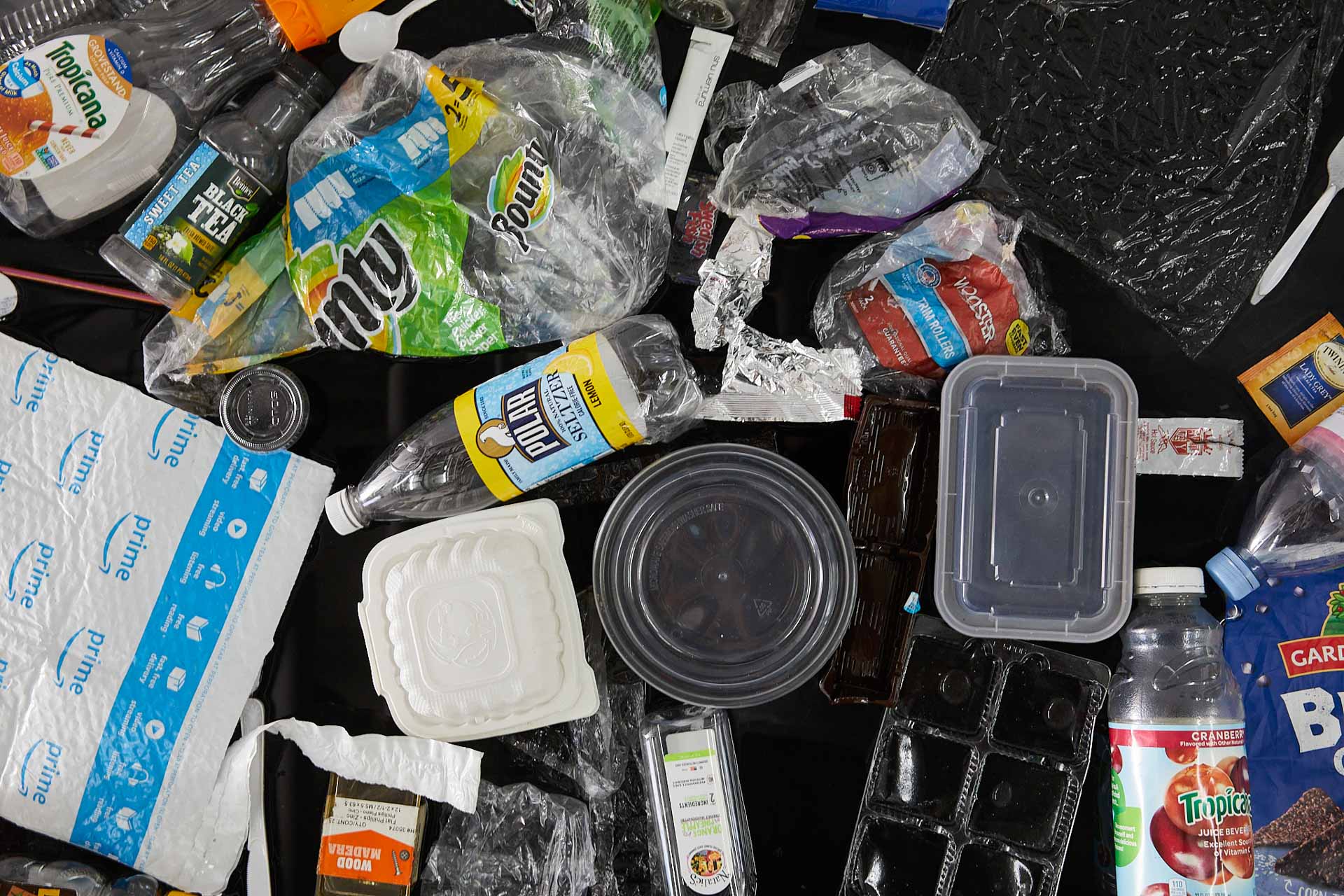
For the entirety of 2020, I kept every piece of single-use plastic I consumed. Gyre consists of a large, sandbox-like structure filled with hundreds of gallons of water and thousands of pieces of single-use plastic. This is the artist’s “gyre”—the one he created single-handedly—but would it be significantly different from yours? Isn’t it time we see what that looks like?
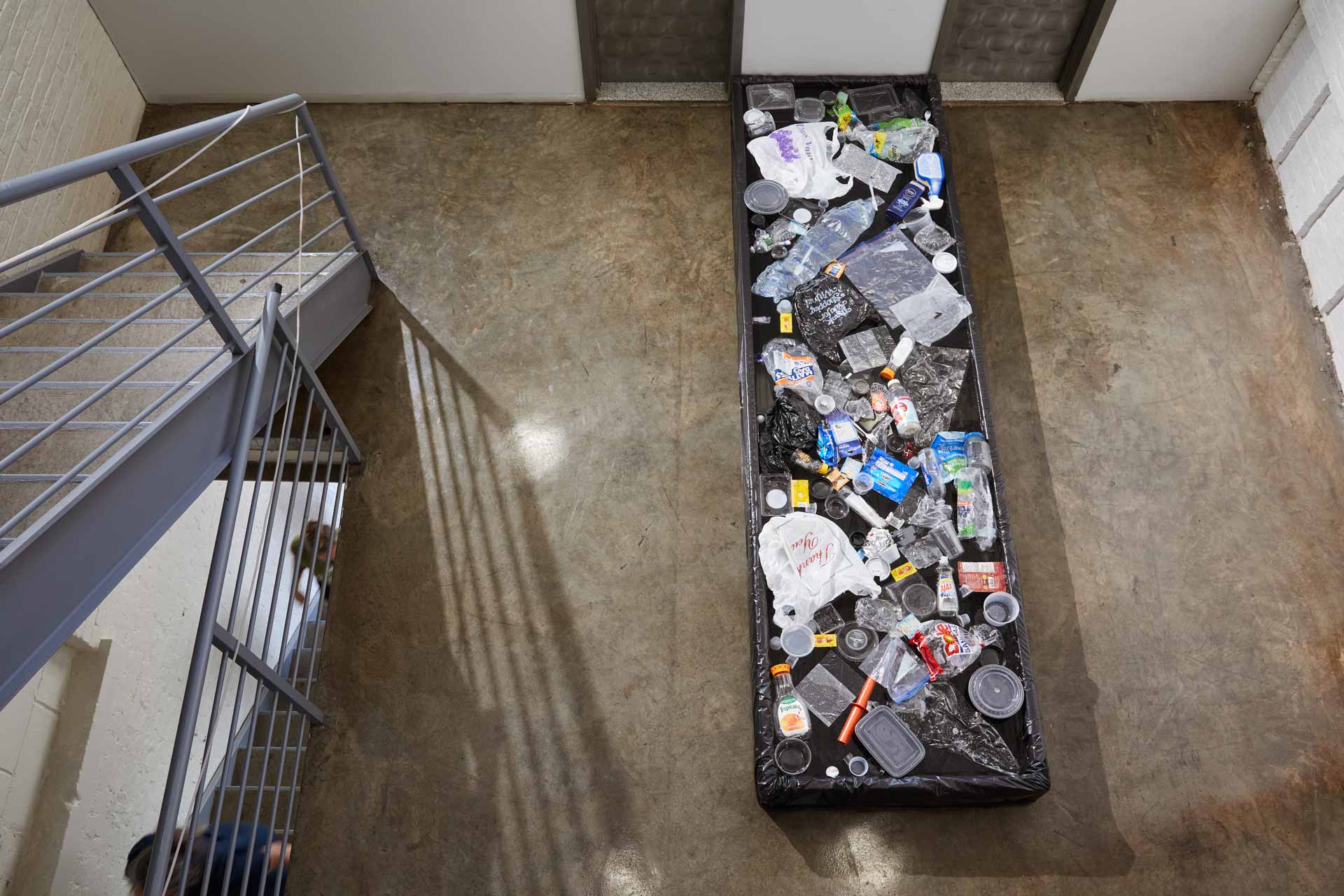
We live in an age where each of the five oceans has its own garbage patch. These garbage patches, or gyres as they’re called, stretch for thousands of miles. The National Ocean and Atmospheric Administration’s Marine Debris Program has estimated that it would take 67 ships one year to clean up less than one percent of the North Pacific Ocean Garbage Patch.1 Most of us will never see this ecological disaster, yet we have all had a hand in creating it.
A small portion of Gyre was shown for the first time on July 31, 2021, at the Kingsland Wildflowers Festival, put on by the Newtown Creek Alliance in Greenpoint, Brooklyn.
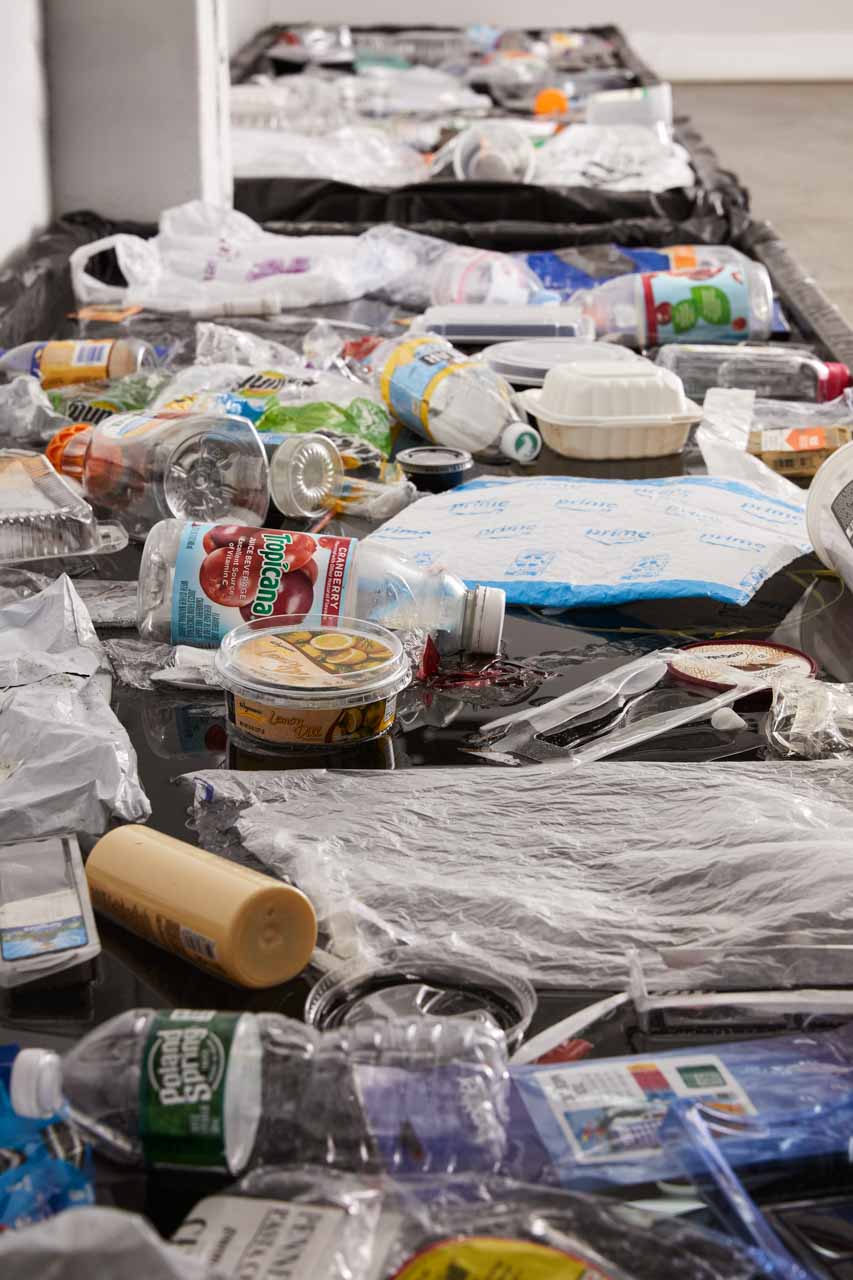
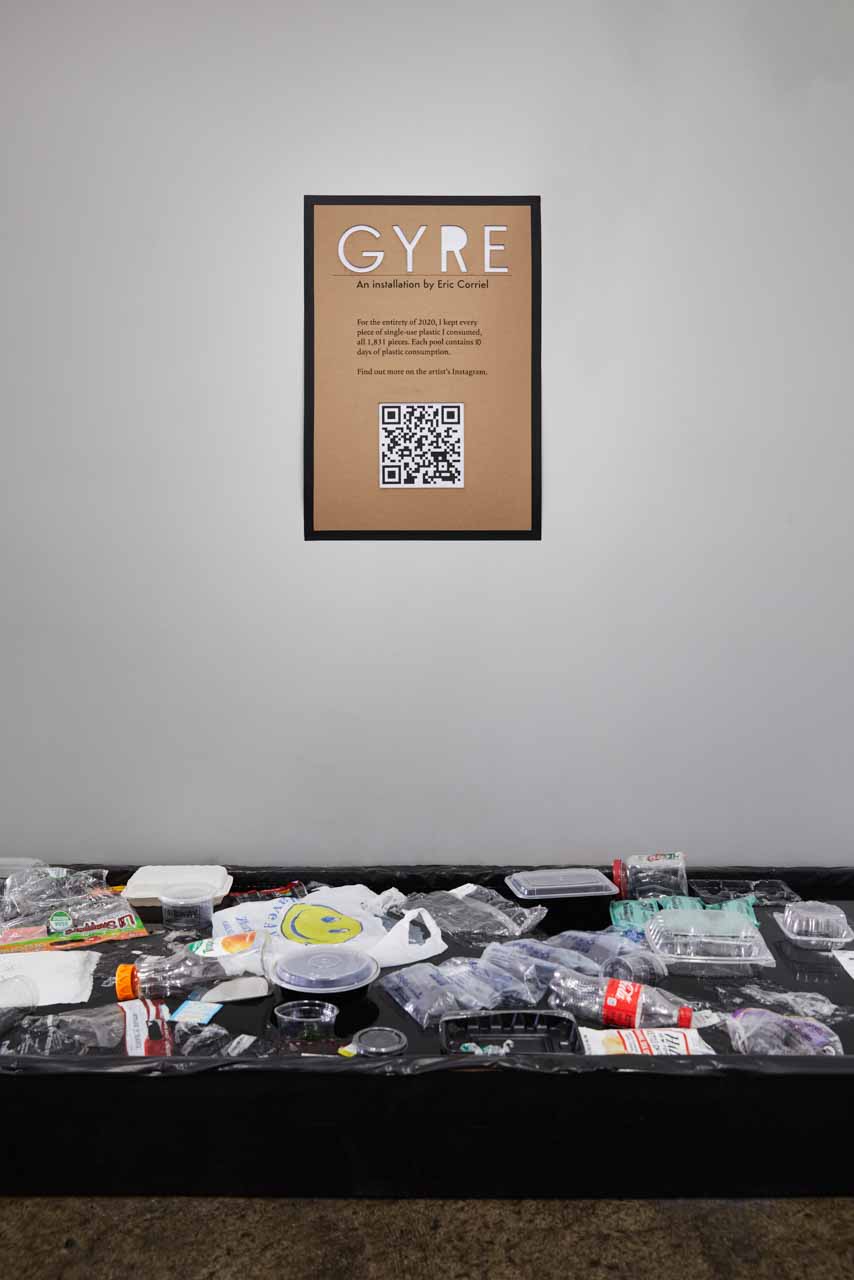
Three separate 10' x 3' x 8' pools were filled with water and approximately 10 days’ worth of the artist’s single-use plastic consumption, representing about 30 days in total. The entirety of what was shown does not even represent 10% of the whole piece. A current running through the pool creates an undulating, kinetic surface.
I am currently searching for a 2,000 sq. foot cultural exhibition space to show this work in its entirety. If that’s you, please contact me.
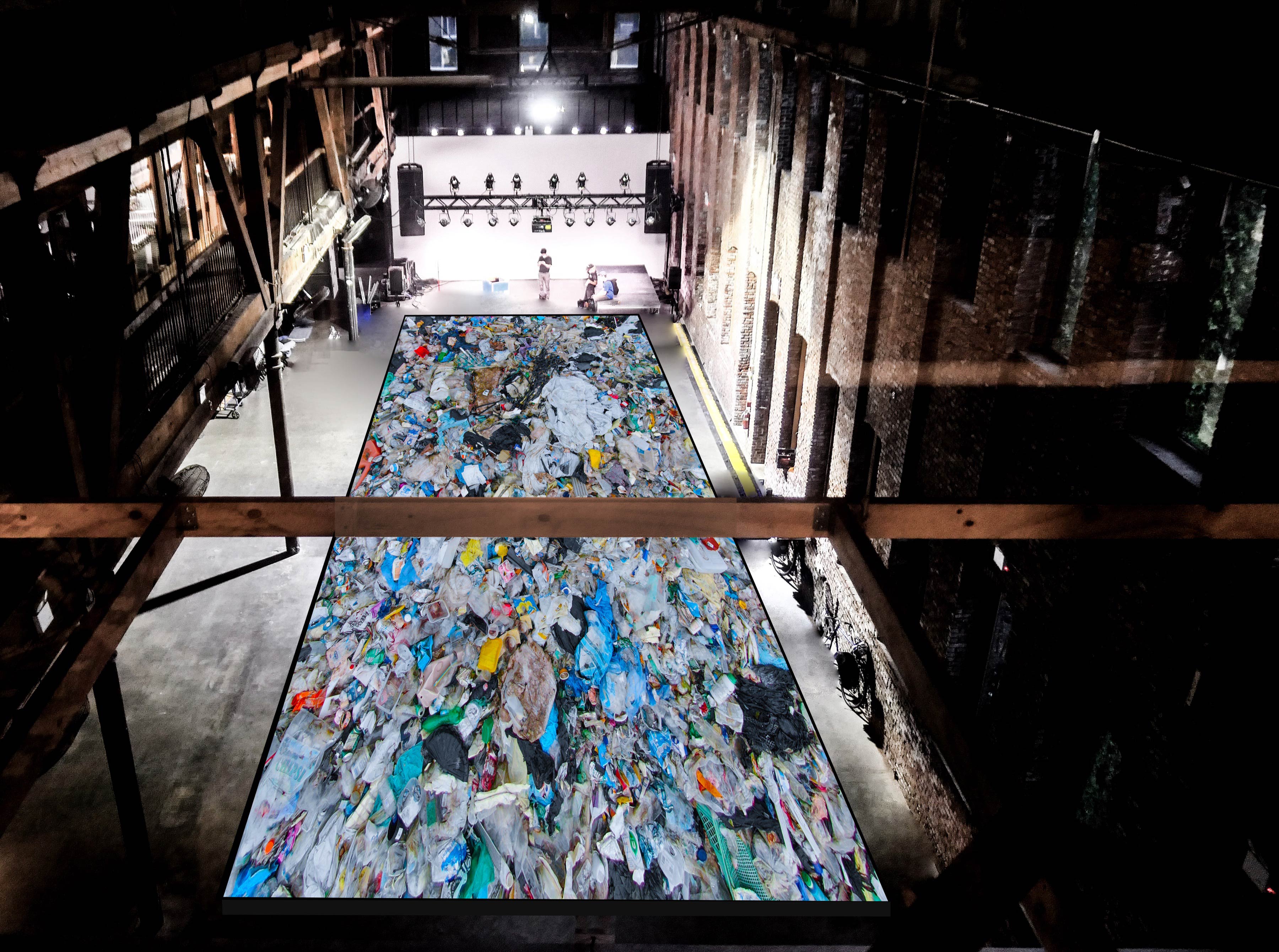
Ultimately, I hope to find a permanent home where Gyre can exist for the next 1,000 years—the time it will take for the plastic to fully disintegrate. In this way, generation after generation will experience the slow-motion interplay between the single-use plastic we consume today and the exceedingly long length of time required for its eventual disintegration.
Gyre is made possible by the New York State Council on the Arts with the support of the Office of the Governor and the New York State Legislature, The Puffin Foundation, and New York Foundation of the Arts.
